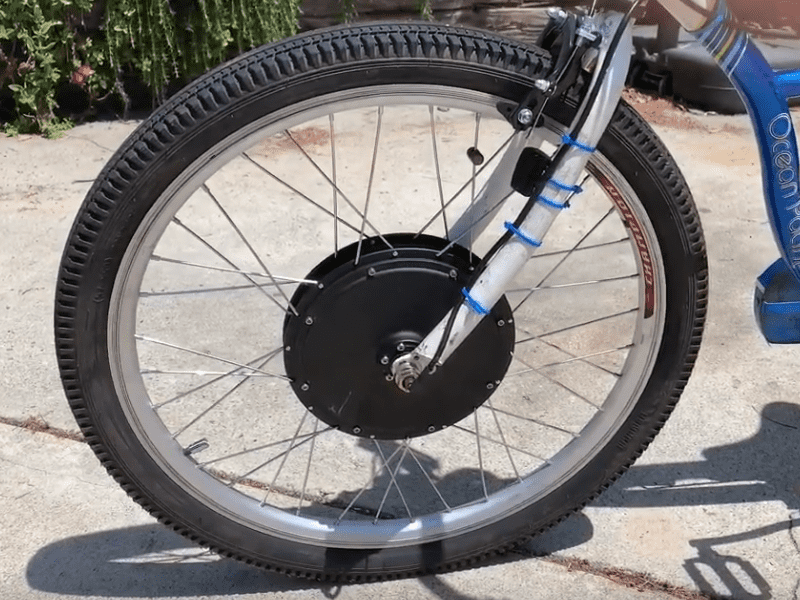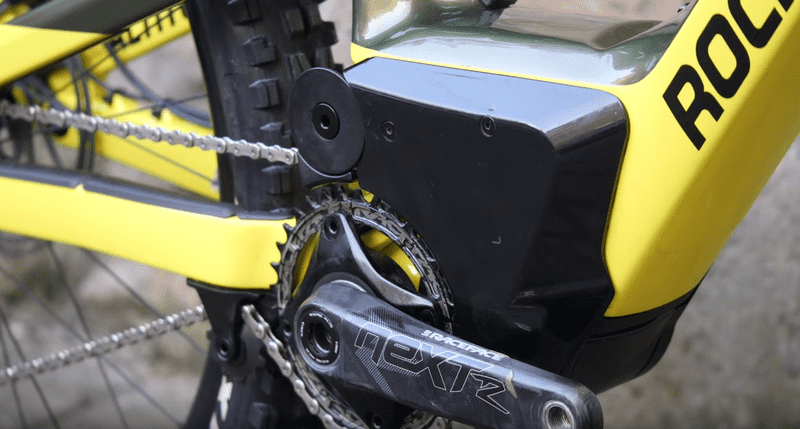How to Choose the Motor for the Electric Bike
There are so many e-bike motor types out there. Each of them has its own features, advantages, and disadvantages. Sometimes it can be hard to choose the right one. The right bike dynamic and performance on the trail hugely depends on the motor you choose.
So, let’s talk about different types of motors and which one to choose.
Three types of electric bike motors
In general, there are three main types of e-bike motors that you should be aware of.
- Hub mounted direct drive motor
- Geared hub motor
- Central/Mid drive motor
Hub mounted direct drive motor
The wheel hub motor (also called wheel motor, wheel hub drive, hub motor or in-wheel motor) is an electric motor that is incorporated into the hub of a wheel and drives it directly.

The plus of this type of motor is that it doesn’t have any extra parts like intermediate gears and other things, which allows reducing friction losses. Because of that, direct drive motors are the most efficient motors for e-bikes.
It’s basically a pure electric motor. The stator is mounted on the axis and has copper windings fixed to it. The rotor with magnets is mounted to the outer shell of the wheel and rotates with it.
When electricity is applied to the stator a magnetic field is induced that causes the magnets to move, which makes the wheel turn and propels the bike forward.
Hub motors require little to no maintenance because there is basically nothing to wear out, which guarantees the durability and accuracy of the drive characteristics throughout the entire operating time.
Only electric bikes with direct drive motor have the function of recuperation (charging the battery when braking). This gives them a longer run time from one charge.
Advantages
- Higher efficiency due to the lack of gears
- Reliability and simplicity of design
- Possibility of recuperation
- High torque at low rpm
- Low noise and vibration level
However, to produce enough power this type of motor has to be big, which leads to a greater load on the bike’s suspension. If your bike is not equipped with good springs, and you add to that the weight of a person with some baggage, well, you may end up with a broken frame.
Another slight disadvantage is magnetic resistance. When driving with the motor turned off, the pedaling will be a little harder than on the same bike without a motor. It feels like riding in a light headwind.
Disadvantages
- Large dimensions and weight of the motor considerably affect the suspension
- Insignificant magnetic resistance
- Higher price
When to use: If you want your bike to reach speeds above 30 km/h and carry a lot of weight, then a direct-drive motor wheel with a power of 600 W or more will be the right choice. It’s a reliable unit that doesn’t require a lot of maintenance.
Geared hub motor
Geared hub motor incorporates a gearbox. The gearbox consists of a planetary gear with three plastic gears inside. This increases the torque of the motor-wheel and reduces the overall size. However, at the same time, this reduces the maximum speed to 30 km/h.
In the geared motor, the rotor is located inside of the hub, and the magnets are glued to the outside of the rotor. The first disadvantage of this design is that under the influence of centrifugal force, the magnets tend to break away from the rotor, which is one the most common breakdowns and sadly, one of the most difficult to fix.
The second disadvantage is lower efficiency because of the energy losses in the gearbox.
The advantages of a geared motor include the small size of the motor and its power.
Advantages
- Small size
- High power
Disadvantages
- Magnets tend to fall off
- Plastic gears are not durable
- Lower efficiency because of a gearbox
When to use: Geared motor is more suitable for elderly people. Although sometimes it can be less reliable, it doesn’t weigh a ton, more accurate and compact than direct drive motors.
Central/Mid drive motor
Motors of this type are mounted on a bike’s frame and connected to the wheel by the chain as in normal bikes.
Due to the metal gearbox, it is quite reliable. There is also no need to interfere with the design of the wheel when installing such motor. This design has an overrunning clutch that allows you to not pedal when the engine is running.
Where to install the motor - rear or front hub?
To answer this question you need to know who’s going to be using the bike. Is this going to be a bike for a young or old person?
For older people, installing the motor on the front wheel is more beneficial. For young people, it’s better to mount the motor on the rear wheel. The wheel will not slip, the bike will have good dynamic characteristics.
In front hub motors the motor drives the front wheel and you can add to that by applying pedal power. It’s worth noting that if the motor is installed in the front hub, then it can sometimes slip because the front wheel is less loaded.
One big advantage of the front hub drives is that they have a simple design. If you need to change the tire, it’s very easy to do, whereas, if you have a rear hub drive, you’ll have to disassemble quite a lot do perform such a basic operation.
Of course, if you’re young, full of enthusiasm and have all the time in the world you can have fun with it. But for elderly people, this can be a real time sink and a hassle.
In rear hub motors, the motor pushes the bike forward and it’s very familiar for people since the majority of bikes are built that way.
The rear wheel is usually more heavily loaded. This gives us better pulling power and does not allow the wheel to slip.
New electric bike motor systems
If we look at some modern developments in this area, Russians have developed an asynchronous bike drive (Duyunov’s motor wheel). In contrast to Chinese BLDC (magnet and coil), it doesn’t have magnets. On the other hand, it has a fairly large size.
Another development in this area - Shkondin’s pulsed inertial electric motor wheel, but there’s not much information about it.
The verdict
If the max speed of 30 km/h is enough for your needs, the geared motor is your choice. If you want to drive fast, look at the options with direct drive. The mid drive motors are more appropriate for off-road use. It really depends on which features fits your riding style.

